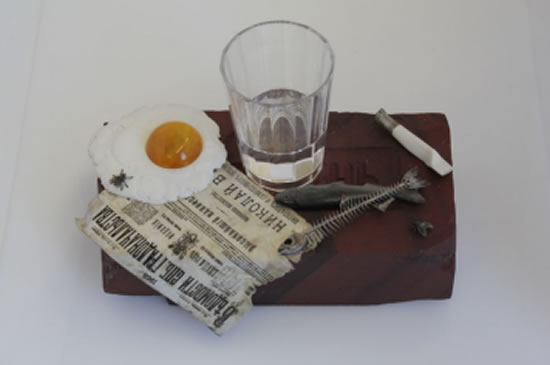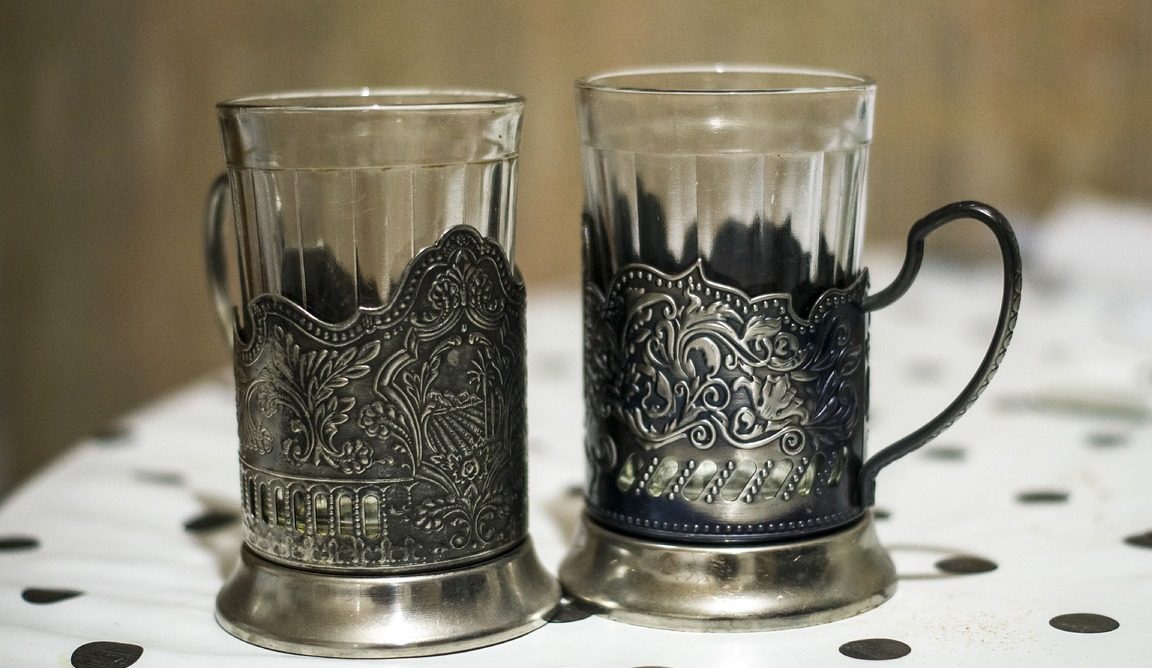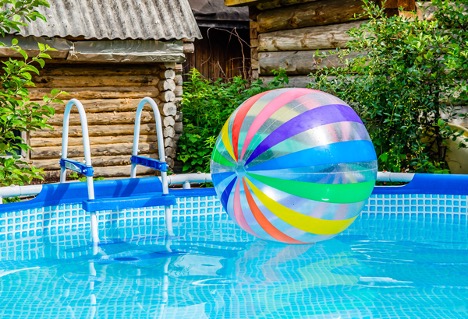How many sides does a faceted glass have and interesting facts
The exhibition of the Faberge Museum, located in Baden-Baden, has a very unusual exhibit. This stone-cutting and jewelry still life in the avant-garde style is notable for the fact that one of its “heroes” is an ordinary cut glass. I never found out what year this miracle was created. But I remember for sure that the author of this still life, Carl Faberge, died in September 1920.

Why such a long preface? Moreover, having accidentally stumbled upon an article about the appearance of a new exhibit in the museum, for some reason I remembered the birthday of the cut glass. It is celebrated on September 11, assuring everyone that it was on this day in 1943 that the first copy of the legendary property of the Soviet era, developed by Vera Mukhina, was released. An obvious inconsistency, isn't it? So I went in search of the truth about the cut glass.
The content of the article
About the Soviet origin of the cut glass
So, let's return to Vera Mukhina. The version that she invented this utensil can, for obvious reasons, be rejected. But there is no documentary evidence that she was not involved in its modernization. Therefore, all that remains is to trust the historians who claim that it was Vera Mukhina modified the faceted glass by strengthening its bottom and adding a rim along the upper edge.
The reinforced bottom gave the already quite durable glasses additional “vitality”.It was thanks to her that they were perhaps the only dishes that could survive processing in the first Soviet dishwasher, which was equipped with factory canteens and catering establishments. They even say that the hero of today's research was created specifically for this technique.
But the rim was intended to increase convenience: they say, the edges forced consumers to strain their lips more so as not to spill the contents of the dishes, but with the rim it somehow became easier. This explanation raises serious doubts (I like to drink tea from a cut glass, but I have no idea what kind of lip tension we are talking about).

Pre-revolutionary history
Taking as an axiom the earlier origin of the symbol of Soviet public catering, I began to look for information on the official pages of various museums. And I did find something interesting.
Version one - about the origin of the name of the dishes
If you believe this version, then The first prototypes of faceted glasses were invented in Rus'. Then they were made of wood, or rather, of planks fitted to each other. This miracle was called doskan, which could be a borrowing from the Turkic language, which contains the word “tustygan”, meaning “bowl”.
The same version explains the rim on the “real” granchak - they say, this is how the shape of the wooden predecessors was reflected, held in place by a metal rim (so that the planks do not fall apart). True, then it is not clear where the lower rim went, but this is so, rhetoric.
Version two - a gift to Peter I
History says that it was Peter the Great approved the production of glass granchaks after Efim Smolin presented one sample to the sovereign. The glassmaker assured that such glassware would be well suited for the navy, because it had a significant margin of safety, and the edges would not allow the glass to roll off the table during rolling. Peter I immediately tested the strength of the vessel by first drinking vodka from it and then throwing the empty vessel to the ground.
The glass of heroic silushka could not stand it. But even despite this, he was approved by the ruler. As a result, over the last four years of Peter’s reign, 13 thousand granchaks were produced.

Version three - metal glass
Historians have found the surviving drawings of Nikolai Gavrilovich Slavyanov (he invented the arc welding method), which depicted glasses with 6, 8, 20 and 30 sides. True, the inventor proposed making them from metal (they say that such a sample should be found in the storerooms of the Motovilikha Museum), but that is not the point.
What is much more interesting in this story is that these drawings could have ended up at the glass factory in Sylva - at that time the enterprise was quite developed and eager to launch new products. And other Russian factories took their example from such a leader, including the one located in the city of Gus Khrustalny, which was the first to adopt new products from lovers of experiments.
Which cut glass is considered real?
Considering that all the listed versions have a serious time difference, it makes no sense to put any of them in first place. But this abundance of options gives rise to the second question - which version of the faceted glass should be considered the very property of the USSR?

Disputes on this topic continue to this day, which serves as further proof of the popularity of granchak. For the same reason, there is no consensus. But if you still choose the most popular models of this glassware, then the first place will come to the big-lipped glasses - the ones with the rim.
Then it's a little more complicated: in Soviet times, faceted glasses of various sizes were produced (50, 100, 150, 200, 250, 350, and in one of the sources there was even a variant of 290 milliliters).
Volume 250 milliliters (200 - up to the rim and another 50 if poured to the top) - a fairly common option in Soviet catering establishments. And it was also popular among the common population, since every housewife knew how to use it to calculate the required amount of culinary ingredients.
But in soda machines, glasses with a volume of 200 ml were often placed. According to one version, it was these granchaks that became the favorite equipment of those who “thought for three”, because if you pour it to the rim, then 167 ml of drink will fit into such a container. An undeniable convenience when pouring half a liter into three vessels, isn’t it?
As for the edges, it’s even more complicated here, because facets were produced with 10, 12, 16, 17, 18 and even 20 edges. True, the more there were, the more expensive the dishes were. For comparison: a ten-sided one cost 3 kopecks, and a twenty-sided one cost 14 kopecks.
Taking into account the financial capabilities of ordinary workers, it is quite logical to assume that it was the simplest 10-sided glass that was the most popular. But it is not exactly. So if you have a different opinion on this matter, please write it in the comments.
Well, everything in the author’s reasoning is speculation. A faceted glass was hardly the first example of mass-produced glassware; it does not need to be blown, it can be made using a stamp and a punch, and this is in fact a colossal technical and cultural breakthrough - with the advent of a cheap glass, one could literally afford glassware every.
In fact, there is no faceted glass in the world older than the fourth quarter of the 17th century, and industrialist Nikita Demidov proposed this glassware, and the “cut glass” was made exclusively for the Imperial Navy - so that the glass would not roll off the table in storms and seas. Whether Efim Smolin presented the sovereign with a sample of a cut glass, or the disgraced Demidov himself made his mark - this is not so important. It is important that the sculptor Vera Mukhina had nothing to do with the invention of the stamped faceted glass.
Initially, the faceted glass was created exclusively for the Navy of His Imperial Majesty, and Vera Ignatievna Mukhina has nothing to do with the invention of the faceted glass.
My great-grandmother inherited an inheritance from her great-grandmother, and among other things there were cut glasses. When they appeared in our house, Vera Ignatievna was not in the project. The disgraced industrialist Nikita Demidov never apologized to the Russian Autocrat, Pyotr Alekseevich Romanov, for the unauthorized minting of royal chervonets: he cast cannons for the Navy, made guns, and pistols. Among other things, Demidov proposed the shape of a glass that would not roll off the table during sea motion. It was not Demidov himself who brought this new product to St. Petersburg. But the fact that the cut glass was invented by his artisans is certain...
As far as I know from many sources, Vera Mukhina’s glass had 15 sides - the number of republics. It is his birth that is celebrated on September 11th. Yes, it has been reinforced with a car wash rim.
Was there such a thing - 15-sided... We have one Soviet one at home, it has 20 edges...
Mukhina's glass - 14 sides (14 republics), united at the top by a rounded border - the Republic of the RSFSR - what was this political meaning: the unifying and rallying role of the Russian People. That’s the whole “secret” of the Soviet device SG - 14 - Glass of faceted sculptor Vera Ignatievna Mukhina.
Appeared under Peter 1. In the navy. When rocking, falling on the table, it did not roll or break.






Oh no no no. Author, off topic.
Anyone who lived in the USSR knows the answer to the question: “What is the SG-14 device?”The answer is a faceted glass with 14 sides.
14 faces! This is a classic of Soviet catering.